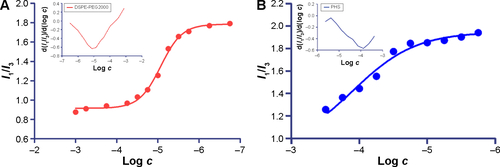Figures & data
Figure 1 (A) The synthetic route of PHS. (B) HPLC spectrum of PHS. (C) 1H NMR spectrum of PHS, D2O was used as a solvent. (D) The chemical structure of mPEG-Hz-PE.
Abbreviations: PHS, mPEG2000-hydrazone-stearate (mPEG2000-Hz-STR); HPLC, high-performance liquid chromatography; PEG, polyethylene glycol; min, minutes.
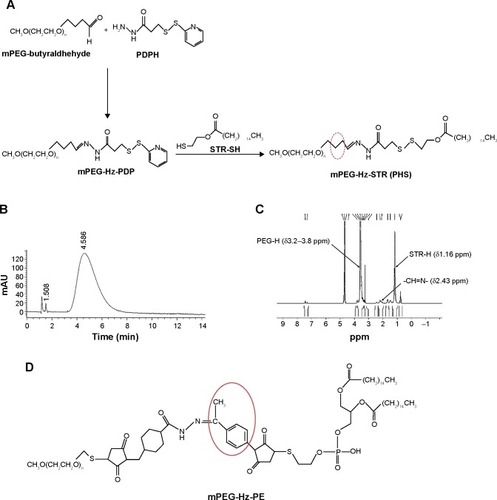
Figure 2 Scheme of various liposomes preparations including CL, CCL, PL, PSL, CPL, and CPPL.
Abbreviations: CL, conventional liposomes; CCL, CPP-modified conventional liposomes; PL, PEGylated liposomes; PSL, pH-sensitive PEGylated liposomes; CPL, CPP-modified PEGylated liposomes; CPPL, CPP-modified pH-sensitive PEGylated liposomes; CPP, cell-penetrating peptide; PEG, polyethylene glycol; SPC, soybean phosphatidylcholine; STR, stearic acid; EDCI, 1-(3-dimethylaminopropyl)-3-ethylcarbodiimide hydrochloride; mPEG, methoxy(polyethyleneglycol); DSPE, 1,2-Distearoyl-sn-glycero-3-phosphoethanolamine.
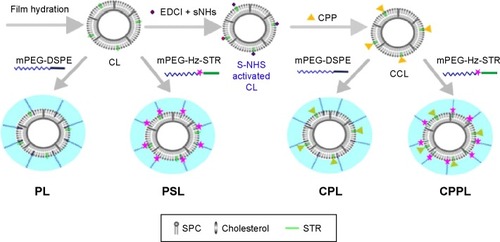
Table 1 Size and zeta potential of liposome influenced by CPP and PEG (mean ± SD, n=3)
Figure 3 (A) HPLC/ELSD analysis of PEG cleavage from PSL at different pH. (I) pH 7.0, (II) pH 6.5, (III) pH 6.0, (IV) pH 4.5. (B) pH sensitivity of PSL measured with flow cytometer. CL and PL served as control groups. Coumarin-6 was selected as a model drug to indicate the cellular uptake of each liposomal carrier at different pH on MCF-7 cells due to its fluorescence emission (λex=466 nm, λem=504 nm [n=3]). **P<0.05.
Abbreviations: HPLC, high-performance liquid chromatography; CL, conventional liposomes; PL, PEGylated liposomes; PSL, pH-sensitive PEGylated liposomes; PEG, polyethylene glycol; min, minutes.
![Figure 3 (A) HPLC/ELSD analysis of PEG cleavage from PSL at different pH. (I) pH 7.0, (II) pH 6.5, (III) pH 6.0, (IV) pH 4.5. (B) pH sensitivity of PSL measured with flow cytometer. CL and PL served as control groups. Coumarin-6 was selected as a model drug to indicate the cellular uptake of each liposomal carrier at different pH on MCF-7 cells due to its fluorescence emission (λex=466 nm, λem=504 nm [n=3]). **P<0.05.Abbreviations: HPLC, high-performance liquid chromatography; CL, conventional liposomes; PL, PEGylated liposomes; PSL, pH-sensitive PEGylated liposomes; PEG, polyethylene glycol; min, minutes.](/cms/asset/2a5cd643-0794-415c-93fa-8b22fc038456/dijn_a_92519_f0003_c.jpg)
Figure 4 Effect of CPP density on cell uptake of coumarin-6-CPPL at pH 6.0 and 7.0 (n=3).
Notes: (A) Effect of CPP density on cell uptake of coumarin-6-CPPL at pH 6.0 and 7.0. (B,C) The cells distribution with fluorescence intensity of CPPL detected by FCM at pH 7.0 and pH 6.0, respectively.
Abbreviations: CPP, cell-penetrating peptide; CPPL, CPP-modified pH-sensitive PEGylated liposomes; PEG, polyethylene glycol.

Figure 5 (A) CLSM of DOX loaded with 4% CPP-modified CPPL at different pH. CPL (4% CPP modified, acid-insensitive) and PSL (non-CPP-modified and acid-sensitive) are negative control groups and CCL is served as positive control. (C) Effects of incubation time on cell uptake of DOX loaded by 4% CPPL at pH 6.0 and 7.0. The Hoechst33258 was excited by a 345-nm laser. Those in blue represent the nuclei stained with Hoechst33258, and those in red represent DOX fluorescence (λex=480 nm, λem=540 nm). Scale bar is 50 μm. Quantitative analysis via ImageJ is shown in (B) and (D), *P<0.05, **P<0.01 (n=15).
Abbreviations: CLSM, confocal laser-scanning microscope; PSL, pH-sensitive PEGylated liposomes; CPL, CPP-modified PEGylated liposomes; CPPL, CPP-modified pH-sensitive PEGylated liposomes; CCL, CPP-modified conventional liposomes; CPP, cell-penetrating peptide; PEG, polyethylene glycol; DOX, doxorubicin; h, hours.
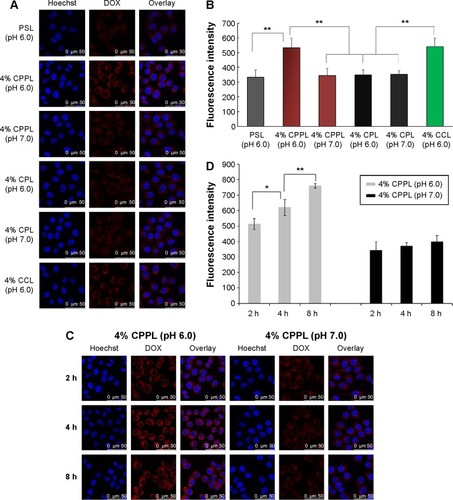
Figure 6 Colocalization of coumarin-6 and lysosomes observed with CLSM after cell internalization with CCPL and endosome escaping for 2 hours. PL is a control group. Co-location description was indicated by the white arrow.
Abbreviations: CLSM, confocal laser-scanning microscope; PL, PEGylated liposomes; CPPL, CPP-modified pH-sensitive PEGylated liposomes; CPP, cell-penetrating peptide; PEG, polyethylene glycol.
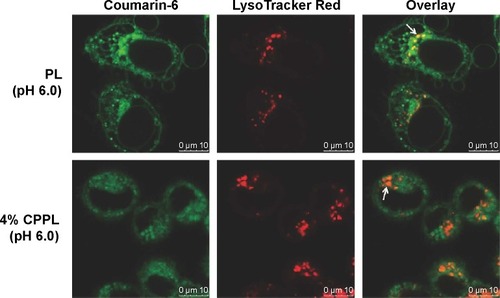
Table 2 Pharmacokinetic parameters of 99mTc-CPPL and 99mTc-PL (mean ± SD, n=5)
Table 3 Biodistribution of 99mTc-CPPL and 99mTc-PL in normal rats for 24 hours (mean ± SD, n=5)
Figure 7 Ex vivo images of interested organs after 2 hours, 4 hours, and 8 hours intravenous administrated FITC-CPPL and FITC-CPL in tumor-bearing nude mice.
Notes: (A) Heart, (B) liver, (C) spleen, (D) lung, (E) kidney, (F) brain, and (G) tumor (from left to right).
Abbreviations: CPL, CPP-modified PEGylated liposomes; CPPL, CPP-modified pH-sensitive PEGylated liposomes; CPP, cell-penetrating peptide; PEG, polyethylene glycol; h, hours.

Figure 8 Scheme of CPPL in vivo tumor targeting process.
Notes: (A) PEG was kept on the surface of CPPL in the neutral environment of blood. (B) CPPL accumulated at the tumor site via EPR effect, and then CPP was exposed on the surface of liposomes as a result of the missing of PEG caused by the degradation of hydrazone bond at low pH tumor area. (C) Improved cellular uptake due to the exposed CPP. (D) Internalization of CCL into tumor cells. (E) CPP adsorbed more H+ in endosome. (E) CPP adsorbed more H+ in endosome and Electrostatic attraction between the cationic CPP-H+ and the anionic components in the endosomal membrane happened. (F) Fusion pore formed and the liposomal cargo was released into the cytosol. (G) The released cargoes has more opportunity entering into nuclei.
Abbreviations: PEG, polyethylene glycol; CPP, cell-penetrating peptide; CPPL, CPP-modified pH-sensitive PEGylated liposomes; EPR, enhanced permeability and retention; CCL, CPP-modified conventional liposomes; CPP, cell-penetrating peptide; SPC, soybean phosphatidylcholine; STR, stearic acid; DOX, doxorubicin.
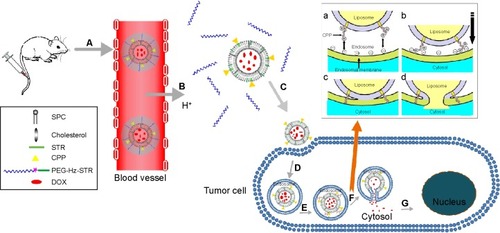
Figure S1 MALDI-TOF-MS of DSPE-PEG2000-CPP.
Notes: The molecular weight distribution indicated that CPP was conjugated with the distal end of PEG at 1:1 molar ratio to form the conjugate of DSPE-PEG-CPP7.
Abbreviations: PEG, polyethylene glycol; CPP, cell-penetrating peptide.
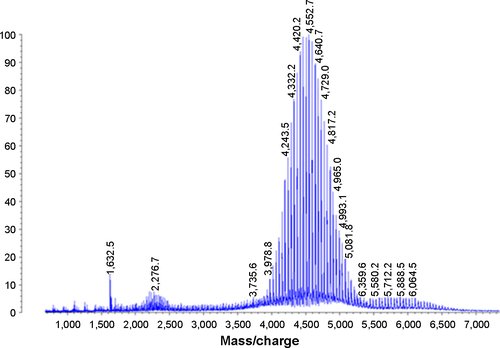
Figure S2 Effect of PEG coupled with CPP in liposomes on cellular uptake measured with flow cytometry analysis.
Notes: PL served as control groups. Coumarin-6 was selected as a model drug to indicate cellular uptake ability of each liposomal carrier at pH 6.0 on MCF-7 cells due to its fluorescence (λex=466 nm, λem=504 nm [n=3]). *P<0.05, **P<0.01.
Abbreviations: PEG, polyethylene glycol; CPP, cell-penetrating peptide; PL, PEGylated liposomes; CPP-SSL, CPP-modified sterically stabilized liposomes; CPPL, CPP-modified PEGylated liposomes.
![Figure S2 Effect of PEG coupled with CPP in liposomes on cellular uptake measured with flow cytometry analysis.Notes: PL served as control groups. Coumarin-6 was selected as a model drug to indicate cellular uptake ability of each liposomal carrier at pH 6.0 on MCF-7 cells due to its fluorescence (λex=466 nm, λem=504 nm [n=3]). *P<0.05, **P<0.01.Abbreviations: PEG, polyethylene glycol; CPP, cell-penetrating peptide; PL, PEGylated liposomes; CPP-SSL, CPP-modified sterically stabilized liposomes; CPPL, CPP-modified PEGylated liposomes.](/cms/asset/6bae2f0a-be05-4a34-9f9a-43ac277ebdb3/dijn_a_92519_sf0002_c.jpg)
Figure S3 The relationship between I1/I3 of pyrene and the concentration of polymer.
Note: CMC is defined as the concentration of polymer corresponding to the inflection point in the curve. When micelle formed, the value of I1/I3 decreased significantly with the increase of concentration of polymer. CMC is a value of concentration sudden changed with I1/I3 and it was obtained by utilizing the method of partial differential.
Abbreviations: CMC, critical micelle concentration; PEG, polyethylene glycol; PHS, mPEG2000-hydrazone-stearate (mPEG2000-Hz-STR).
